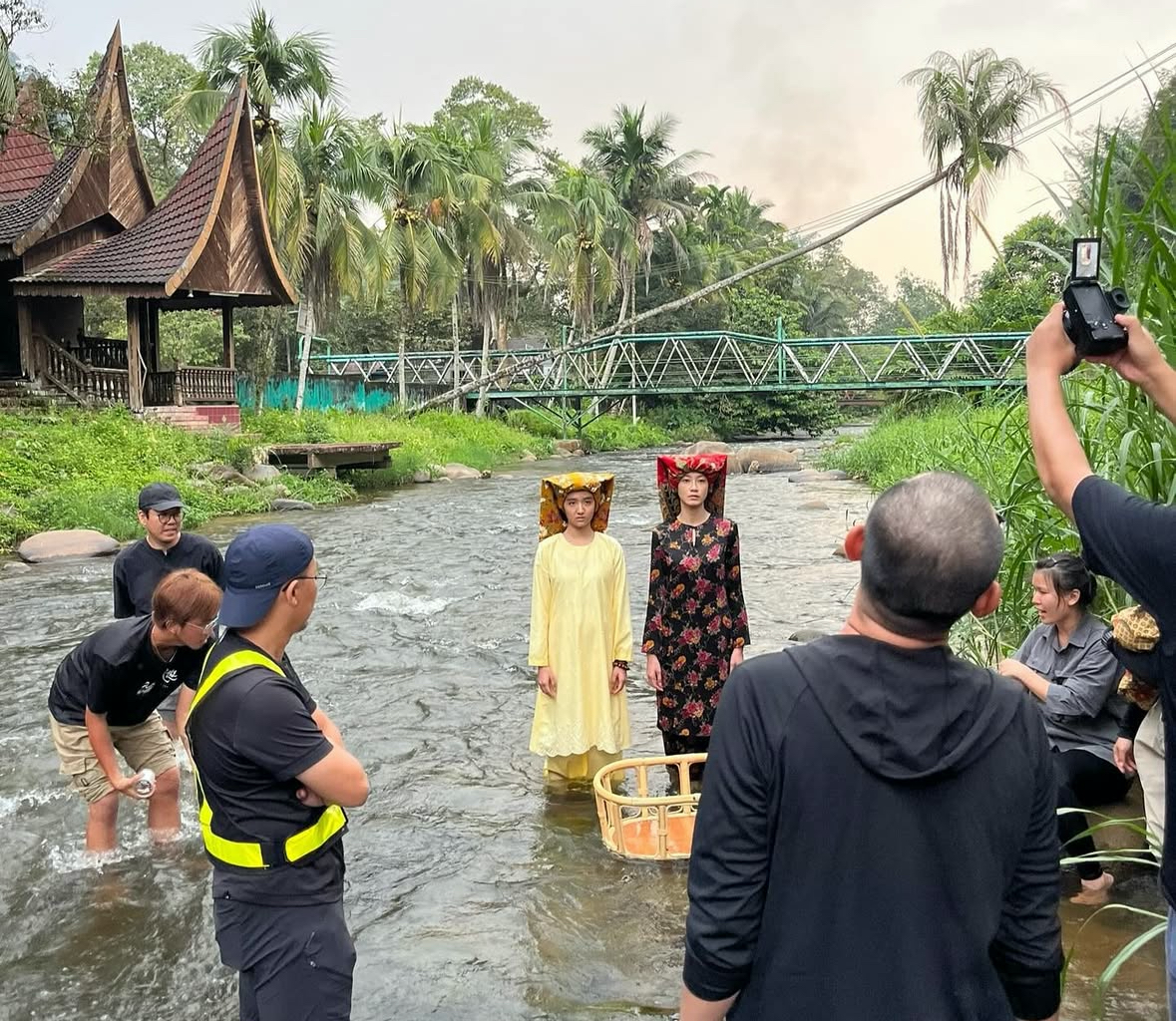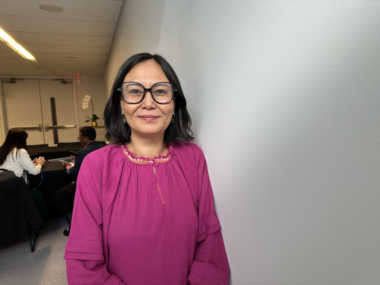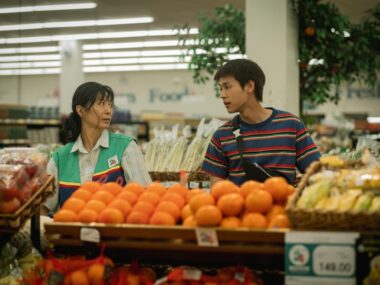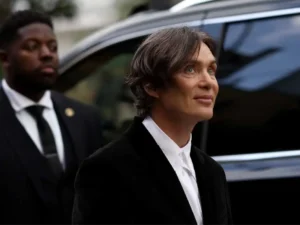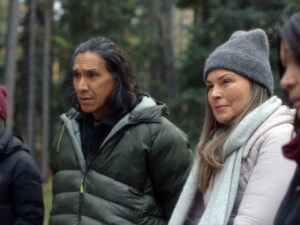Chong Keat Aun is a celebrated Malaysian filmmaker and writer whose work has garnered international acclaim. His debut feature, The Story of Southern Islet, won him the Best New Director award, along with FIPRESCI and NETPAC accolades at the 57th Golden Horse Awards. His sophomore film, Snow in Midsummer, was chosen for the prestigious Giornate degli Autori section at the 80th Venice International Film Festival. After its September 2023 premiere, the film received widespread praise and went on to secure the Uncaged Award for Best Feature Film at the 2024 New York Asian Film Festival.
Natalie Hsu is a talented Hong Kong actress who launched her career as a child star. She gained significant attention for her standout roles in the drama Fly Me to the Moon (2023) and the romantic film Last Song for You (2024), the latter of which earned her a nomination for Best Actress at the 43rd Hong Kong Film Awards.
Director Chong Keat Aun’s latest film, Pavane for an Infant, starring Fish Liew and Natalie Hsu in the lead roles, had its North American premiere at the New York Asian Film Festival on July 12th, with Hsu also set to receive the Screen International Rising Star Award at the ceremony.
Set in the multicultural landscape of Malaysia, the film explores the taboo surrounding the baby hatch, an institution quietly condemned by society as a symbol of moral decay, deemed punishable by God. The story follows three dedicated staff members at a Kuala Lumpur baby hatch facility as they navigate a complex web of societal resistance, working to empower women from diverse backgrounds who struggle with the intricate concept of bodily autonomy.
One Lash Shot delved into the creative whirlwind of Director Chong Keat Aun and Actress Natalie Hsu, as this dynamic duo lifted the veil on the deeply ingrained traditions surrounding the baby hatch system within Malaysian society.

Keat Aun, you wrote and directed this film. What made you choose this particular story?
Keat Aun: Actually, this story comes from my previous experience. I worked at a radio station in 2016, where I interviewed an old schoolmate from college. She is Muslim, a single mother, and worked at a baby hatch facility. So, I’d say that around 60 to 70% of the film is adapted from her story. At the time, she had just been dumped by her then-boyfriend and had to bring the baby to the baby hatch. Later on, she volunteered at the facility, and we had a chance to talk about her experience. This inspired me to make a film based on that experience.
In 2016, as I mentioned, I worked at a radio station— a BBC radio station in Malaysia before the country gained independence. After independence, it was taken over by the Malaysian government.
When I interviewed my schoolmate about her story, it was in 2016. At that time, I was informed that the topic of the ‘baby hatch’ was not allowed to be broadcast in Malaysia, so I had to stop the project. It wasn’t until 2021 that an investor approached me, asking me to revisit some ideas. This topic had been on my mind for so long, and I finally got the opportunity to make it into a film.
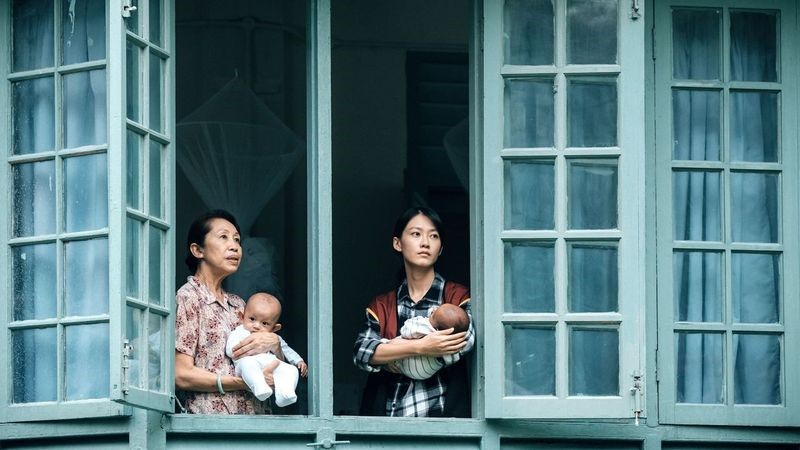
The film opens with a lullaby featuring the lyrics: “If you raise a son, he takes care of you when he grows up. If you raise a daughter, she belongs to others when she grows up.” Do you think it still rings true in today’s world?
Keat Aun: I did a lot of research on lullabies in Malaysia, including the history of them, because Malaysia is a multicultural country with different languages and religions, so there are many different lullabies. For example, Malay, Chinese, and Indian lullabies. When I was writing the story, I thought that since the theme song is about a woman singing to a child, it’s her way of expressing herself as a woman in a conservative society.
Lullabies are typically sung by mothers. In such a conservative and oppressive society, they serve as one of the ways women can express their perspective through their voices. In the context of the Chinese community, this particular lullaby implies that they tend to diminish their own importance and belittle themselves. It reflects how they’ve been exploited and looked down upon in society.
I thought it would be a good idea to combine this with other lullabies and traditions to talk about how they are devalued as a community and how their importance is often overlooked while they’re being exploited.
In Malaysia, when you put a baby in the cradle today, there is no music; only digital sounds are used. I was intrigued by the idea of using music when placing a baby in the cradle. When asked what music I would use in that case, I thought of the many cultures in Malaysia and the contrasts between Eastern and Western music.
In the West, there is classical music like Ravel’s Pavane for a Dead Princess, which mourns the death of a princess. In the Indian tradition, there is the concept of Pavane, which is a peacock dance symbolizing rebirth.
So, I thought it would be interesting to use one piece of music that has two meanings—one representing death in Western culture and the other representing rebirth in Eastern culture.
This entire film revolves around the baby hatch system. Is it still in practice in Malaysia today? And, is the 30-second rule—where the mother has only that brief window to retrieve the baby after placing it in the hatch—still enforced? Could even a one-second delay pose a serious problem?
Keat Aun: The 30-second countdown was abolished many years ago. Originally, it was 50 seconds and later 30 seconds. In Malaysia, this practice is no longer being followed. But for dramatic purposes, I wanted to highlight the emotional struggle of mothers who might have second thoughts about abandoning their babies but are still faced with the difficult decision.
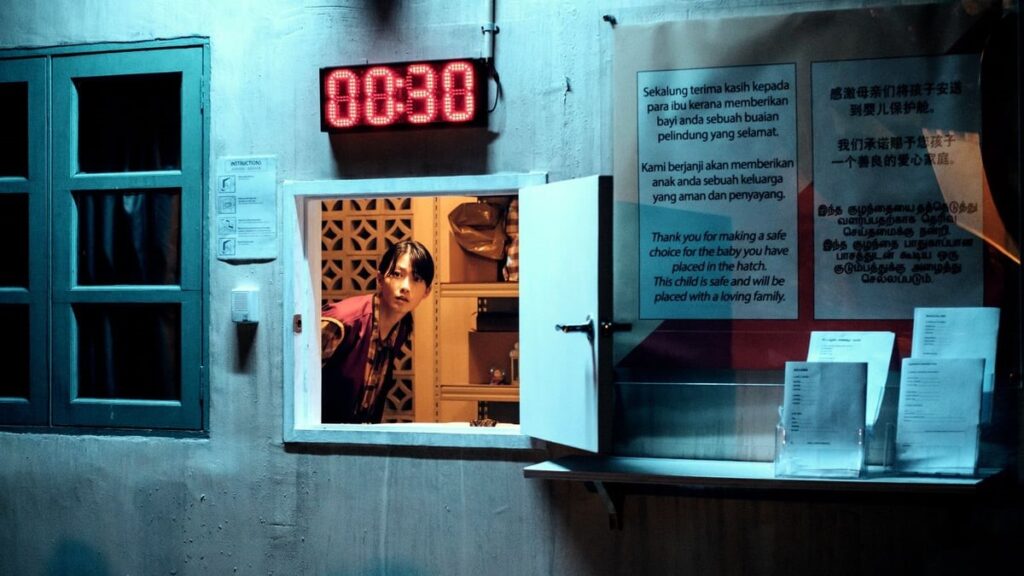
For me, it was important to include this as a cinematic device to tell the story. However, this type of countdown is still practiced in other countries, even though Malaysia no longer follows it.
How did you manage switching between three languages—Cantonese, Malay, and English—throughout the film? The director is Malaysian, and so is actress Fish, but Natalie, you are of Hong Kong/British origin, right?
Natalie: Actually, I have to thank them because when we started filming—during the preparation phase—we were in Hong Kong. They sent audio recordings of every single Malaysian line. They uploaded everything to a Google Drive folder, with slow, normal, and fast versions. This was really helpful.
Our assistant director recorded all the lines for us, and I listened to them as frequently as I could before arriving in Malaysia. Once there, we had about one or two weeks of prep before filming started, so I immersed myself in the environment and listened to how the local crew spoke. Even though it wasn’t exactly the same lines I was going to say, it helped me pick up on the tone and pitch they used.
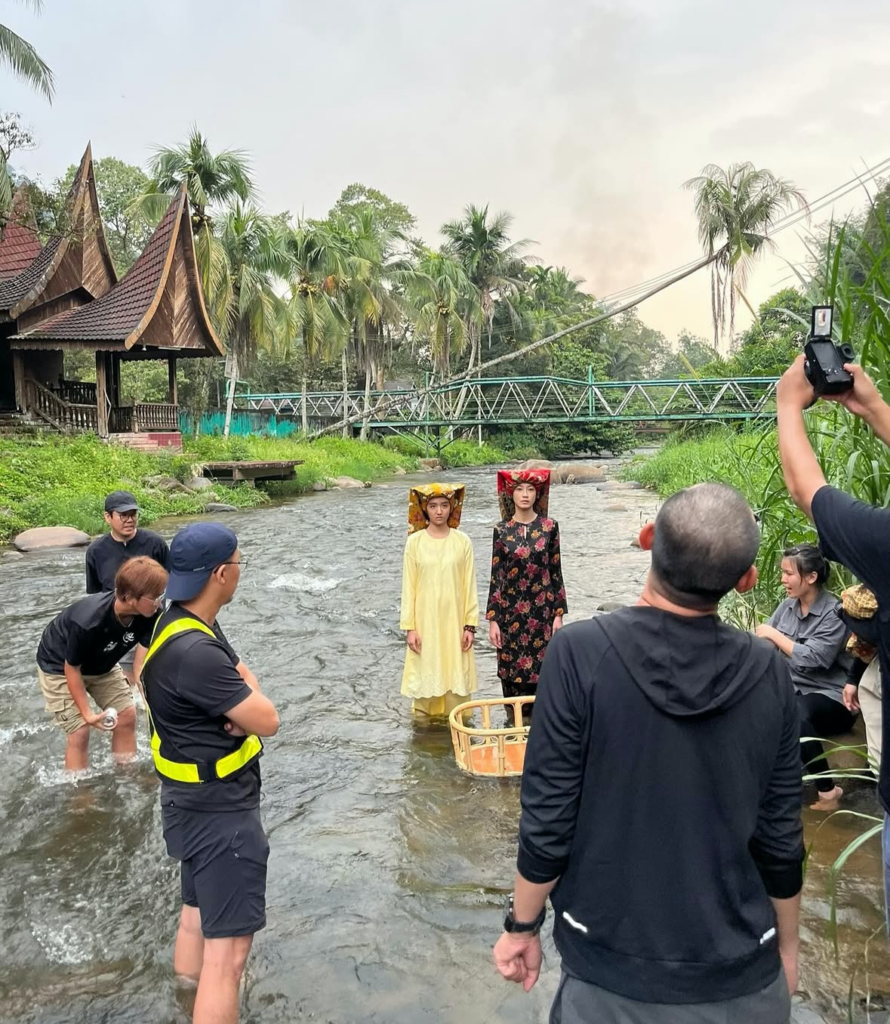
Additionally, my grandma lives in Malaysia, so I grew up visiting her every year. She speaks Malay fluently, and I picked up some words over time. Hearing it before as a language really helped me a lot.
Keat Aun, in addition to composing the film’s score, you also wrote the lyrics for the theme song Mortal Song, performed by Ivana Wong. Could you walk me through your approach to creating the music and lyrics?
Keat Aun: I’m a musician myself—I’ve been composing and performing for years. It’s a big part of my creative process and an outlet for expressing myself.
For me, I usually share the score as a demo with the actors. It’s an easy way for them to connect with their characters and feel the scene’s atmosphere. I want them to get a sense of what the music will be like, and this is how I’ve approached scoring not just this film but also my previous ones.
This is just how I express myself and also help prepare my actors for the scenes they’ll be in.
Natalie, you portray Lam Siew-Man, and your first appearance comes about 30 minutes into the film, with a striking close-up of you hyperventilating while driving. Was that the first scene you filmed on set?
Natalie: It was actually the last scene I filmed—the night I wrapped. It was the very last scene of the entire shoot. Thank goodness, I didn’t really have to drive because I had just gotten my driver’s license earlier that year.
In the other scene, I actually had to drive, but for this one, they had the car on a truck, and I just pretended to steer.
What’s really interesting about working with Chong Keat Aun is that he likes to do very long takes. You never know if he’ll use the whole thing or just part of it, so you just have to keep going.
I remember sending some clips to the editors for a rough cut, and they were like, “This take is seven or eight minutes long. Did you forget to cut?” But that’s just how he works.
I think it’s amazing because it really helps you immerse yourself in the character. You’re not jumping in and out of the role; you just become that character in that moment. It also allows you to pace the scene more naturally because you have a longer time to work with.
I try not to think about it as my “opening scene,” because it adds unnecessary pressure.
Keat Aun: I think for the toilet scene, we did only one take. We rehearsed for about three hours that morning before filming.
Natalie: I’m really grateful for the rehearsal because with scenes like that, you don’t want technical issues to be the reason for retakes. It shouldn’t stop just because of something that could have been avoided. So, I’m grateful the crew was thoughtful and careful throughout.
We rehearsed so much because we had to fill the bathroom with water, and the cinematographer was lying horizontally on the sink to get a wide shot. We needed a lot of people in there for lighting and camera angles, so everyone had to find their own space while the floor was half-flooded.
But all that preparation paid off because we got it in one take.
Keat Aun: For me, that scene is very complicated because of the water. The slowly draining water serves as a metaphor to convey the sexual assault and the trauma she experienced. It’s a visual language I wanted to use to represent that.
Natalie: And I also had my legs slightly apart, which was symbolic of the actual assault scene.
How did the two of you end up collaborating on this project?
Keat Aun: In the beginning, I was looking for someone around 18 years old, a young girl. We tried to cast a wide net, searching for Taiwanese actors who speak Malay and Malaysian actors in Hong Kong. I ended up looking at pictures, and I had this image in my mind that the character had to possess a kind of pure innocence, almost like a clean slate.

For me, that was the visual aspect of it. That was important for this particular character. Then, I had a chance to have Zoom interactions with Natalie, and I wanted her to speak either in Malay or with an accented Cantonese, to see if she was right for this role.
I don’t think there was any formal audition, technically speaking. It was just a process of getting to know each other and determining whether or not she was perfect for the role.
And, Natalie, how was your experience working with Fish Liew?
Natalie: It was awesome because we were actually part of the same company in Hong Kong. We’re under the same big branch. We had seen each other at several events, dinners, and banquets, but we’d never really worked together.
And I think it’s really important, especially for this film, that the two actresses playing these roles have a certain level of connection. Even though you’re acting, I think it only goes so far. The audience can really feel it through the screen if the characters truly share a special bond.
On a side note, I think that nowadays, with so much social media and comparison, women are often pitted against each other. It’s very competitive, and you’re always trying to be better than others. But this film was very much about being there for each other, about women supporting women. The experience of gaining that understanding, of truly understanding each other, was really special.
And Fish was the perfect person to connect with that sentiment because she’s so kind. I don’t know how to explain it, but I think anyone who meets her will feel it. And I think that’s what allowed her to play the character so well—because at the end of the day, she’s just so kind, giving, and generous. You can see it in her eyes. Even when I was watching the film, when I was watching her, you don’t even have to know her personally to feel that energy coming from her.
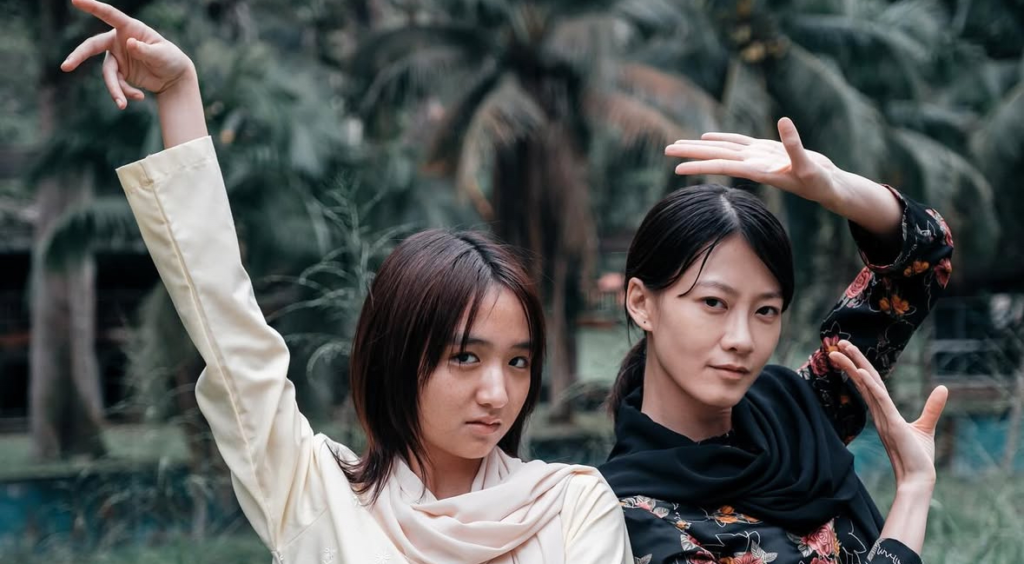
And, of course, she’s so experienced. Technically, in terms of acting, she helped me so much. Sometimes I get very overwhelmed and overstimulated, and I end up blanking out and retreating into my own world. But she was always there to pick me up and bring me back.
I remember at one point she said, “Nat, if you can’t see the camera, the camera can’t see you.” And I was like, “Oh, sorry!” (laughs). She has these very simple, quick ways of helping me. She teaches me things, not in a bossy or “I’ve done so much more” way, but in a very gentle, natural, and caring, guiding way.
Also, seeing her interact with the crew really helped me because I’m often too scared to speak up or ask for help. I remember there was a door she had to open that needed to stay open, but it kept rebounding. It kept closing again. She immediately asked, “Oh, can someone maybe stand on the other side to help me hold it open once I’ve opened it?” I remember thinking, “Wow, I can ask that!” It’s fine to ask for help.
She’s just so communicative and clear about what she needs and what will help her. I realized you don’t have to feel bad or ashamed to ask for things like that. Seeing her work really taught me a lot.
My final question is about the Minangkabau culture and the dance sequence with Fish dancing on the plate. How did you shoot that scene while Fish and Natalie were watching it as audience members, and how did their reactions play into it while she broke the plate?
Natalie: It was real shock.
Keat Aun: It was a real Minangkabau village. The reason it’s so important to integrate this particular community, the Minangkabau, is that it’s one of the very few matriarchal societies left, not only in the world but also in Malaysia and Indonesia.

For me, I’ve witnessed this matriarchal community for a long period of time, but it has been slowly eroded by religious and conservative forces. It’s been hijacked by the patriarchal system and its power. That’s why I think it’s important to highlight it.
Regarding the plate dance, it’s part of their culture and tradition. It shows how resilient and powerful the mothers and female community members are. They use plates—not only smashing them but also stomping on them—to symbolize the hard, integral work of domestic labor, especially within the kitchen. It portrays how strong and resilient they are. This symbolism is crucial to the story.
Unfortunately, because of the nature of this scene—this practice of plate dancing and smashing—it goes against the mainstream religious practices currently dominant in Malaysia. So, the scene had to be removed, changed, and revised for the major release of the film in Malaysia.
You can see the dance, though. The tradition behind stepping on the plate is to invite the ancestors into the body to practice this kind of dance. But nowadays, they are not allowed to practice this form of soul dancing or being possessed by the ancestral spirits.
[Author’s Note: Special thanks to Keat Aun, Natalie, Fish and the rest of the crew for bringing this beautiful story to life! Can’t wait to watch your collaboration in Mother Bhumi next!]
